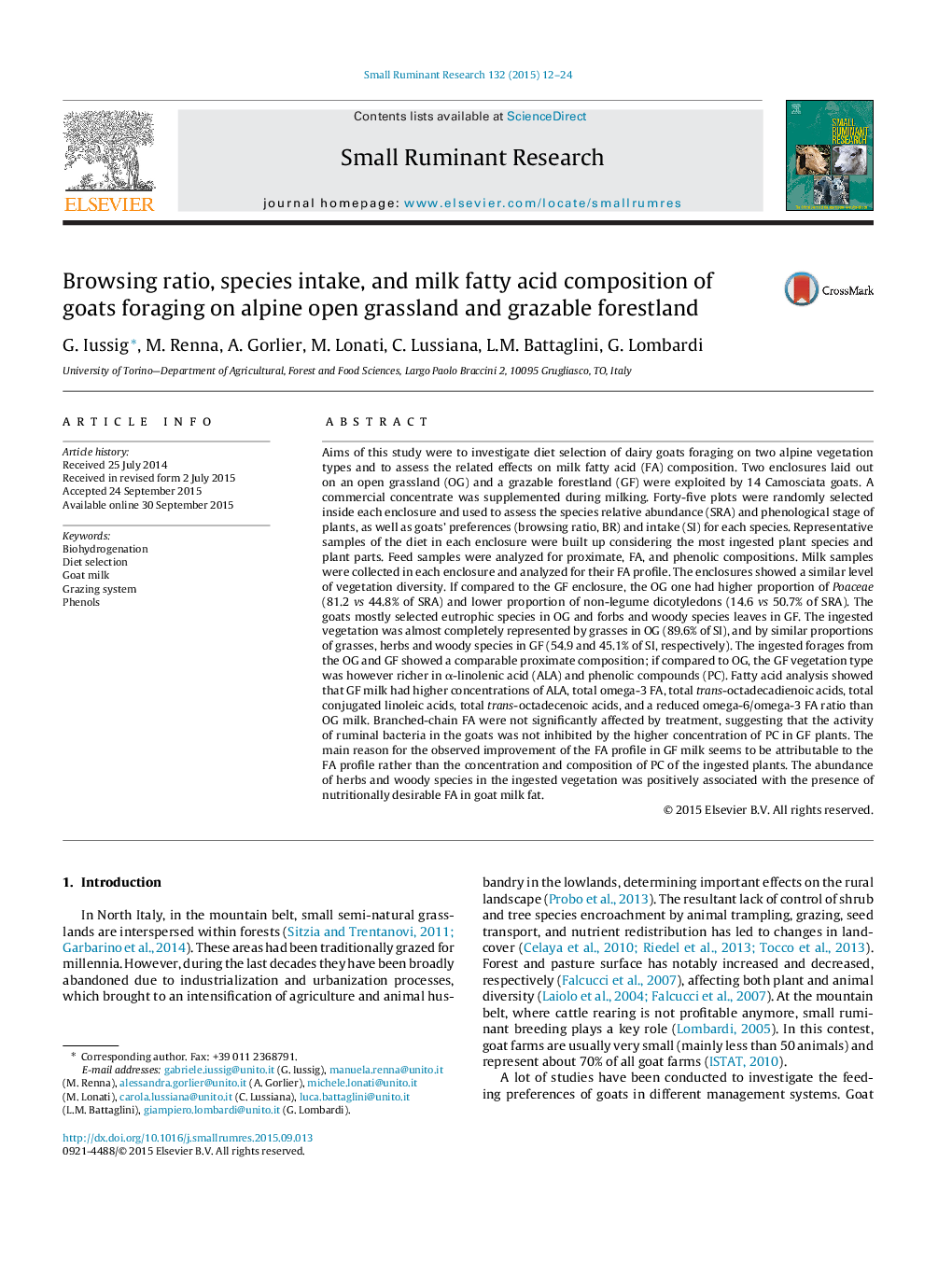| کد مقاله | کد نشریه | سال انتشار | مقاله انگلیسی | نسخه تمام متن |
|---|---|---|---|---|
| 5795443 | 1554360 | 2015 | 13 صفحه PDF | دانلود رایگان |
- The vegetation composition of alpine pastures affected goat's feeding preference.
- Goats selected eutrophic species in grassland, grasses and herbs in forestland.
- A higher ingestion of herbs positively modified the fatty acid profile of milk fat.
- Milk fatty acids were affected by the fatty acid profile of the ingested plants.
- The exploitation of different forages increased dairy products diversity.
Aims of this study were to investigate diet selection of dairy goats foraging on two alpine vegetation types and to assess the related effects on milk fatty acid (FA) composition. Two enclosures laid out on an open grassland (OG) and a grazable forestland (GF) were exploited by 14 Camosciata goats. A commercial concentrate was supplemented during milking. Forty-five plots were randomly selected inside each enclosure and used to assess the species relative abundance (SRA) and phenological stage of plants, as well as goats' preferences (browsing ratio, BR) and intake (SI) for each species. Representative samples of the diet in each enclosure were built up considering the most ingested plant species and plant parts. Feed samples were analyzed for proximate, FA, and phenolic compositions. Milk samples were collected in each enclosure and analyzed for their FA profile. The enclosures showed a similar level of vegetation diversity. If compared to the GF enclosure, the OG one had higher proportion of Poaceae (81.2 vs 44.8% of SRA) and lower proportion of non-legume dicotyledons (14.6 vs 50.7% of SRA). The goats mostly selected eutrophic species in OG and forbs and woody species leaves in GF. The ingested vegetation was almost completely represented by grasses in OG (89.6% of SI), and by similar proportions of grasses, herbs and woody species in GF (54.9 and 45.1% of SI, respectively). The ingested forages from the OG and GF showed a comparable proximate composition; if compared to OG, the GF vegetation type was however richer in α-linolenic acid (ALA) and phenolic compounds (PC). Fatty acid analysis showed that GF milk had higher concentrations of ALA, total omega-3 FA, total trans-octadecadienoic acids, total conjugated linoleic acids, total trans-octadecenoic acids, and a reduced omega-6/omega-3 FA ratio than OG milk. Branched-chain FA were not significantly affected by treatment, suggesting that the activity of ruminal bacteria in the goats was not inhibited by the higher concentration of PC in GF plants. The main reason for the observed improvement of the FA profile in GF milk seems to be attributable to the FA profile rather than the concentration and composition of PC of the ingested plants. The abundance of herbs and woody species in the ingested vegetation was positively associated with the presence of nutritionally desirable FA in goat milk fat.
Journal: Small Ruminant Research - Volume 132, November 2015, Pages 12-24
